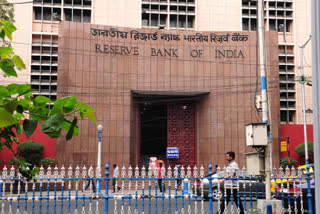New Delhi: With Coronavirus -2019 (CoV19) pandemic inundating fast, India too is in the midst of tackling one of its worst health emergency never experienced in recent past.
The investors are in a state of sell off mood with stock markets experiencing historic lows. It is estimated that close to Rs.14 lakh crore investors wealth got wiped off in the Indian equity market on 23 March alone.
Sensing the oncoming stress in financial sector, many leading central banks across the world have cut benchmark interest rates close to zero and pumping liquidity into the system to avoid any breakdown of payment and settlement systems.
In line with their global peers, the Reserve Bank of India (RBI) and Securities and Exchange Board of India (SEBI) have been proactive in ensuring smooth functioning of financial markets with appropriate measures.
While RBI provided additional timely liquidity windows, SEBI tightened the short sell to contain volatility in stock markets by increasing margins to 40 percent.
RBI strategies to fight virus
RBI directed financial intermediaries (banks and non-banks) to strengthen and activate business continuity plan (BCP) as part of disaster management strategies activating in-house response teams.
So far banks have been selectively functioning causing minimum disruption.
Indian Banks Association (IBA) suggested opening of select branches to provide most essential services. It also advised customers to switch to digital mode to protect bank employees from the virus.
Due to signs of a shortage of liquidity and stiff financial conditions visible with hardening of yields and widening of spreads, RBI infused Rs. 10,000 crores by open market operations (OMO) on 20 March.
OMO is a process of releasing money into the financial markets wherein, RBI buys government securities of future dates from financial market entities and releases liquidity in the system to ease payment flows.
It will ensure that there is no default in honoring payment commitments that can trigger panic in the markets.
RBI advanced its intervention looking to the market needs and offered 16-day liquidity to the tune of Rs. 1 lakh crore.
More to come depending upon the needs and central bank assured all assistance to market players.
The next supportive move:
With monetary policy of RBI slated for 3 April 2020, the industry is expecting a considerable cut in repo rates even before the policy date, depending upon market needs.
Taking cue from global central banks, RBI too, may any time cut repo rates to lower lending rates of banks linked to repo rates.
Even in the midst of ongoing CoV19 disarray, the drop in retail inflation to 6.58 percent in February, which is down from 7.59 percent recorded in January 2020, is a good respite though still away from RBI comfort zone.
Read more:Coronavirus & Economy: Twin challenges before government and us
Similarly, the bright prospects of agriculture sector due to good monsoon during previous season are expected to add to the fervor.
But the tectonic disruptions of CoV19 pandemic is expected to cause immense damage to the economy for a period depending upon its lingering duration and unpredictable cyclical end.
But RBI move is expected to go beyond the call of interest rate curve to cut repo rates by anywhere close to 100 basis points, a deep cut never resorted in the recent times.
Unless the industry is provided support, it will be difficult to prop up recovery.
RBI has already brought lending to NBFCs under priority sector tag.
It will lead to further immediate cut in bank deposit rates and simultaneous softening of lending rates to help access affordable loans.
RBI is expected to ask banks to restructure loan facilities across all industries and to allow capital infusion to create credit risk appetite so that existing and potential borrowers are provided loan packages to ease cash flows.
SBI has already announced emergency loan facilities to its constituents.
Way forward
Looking to the deep and prolonged disruptions in the economy due to compulsive social distancing needed to fight the deadly virus, RBI will ostensibly move towards a prolonged easy money policy and lower interest rates to soothe the nerves of financial market players.
But with a proactive government, regulators and financial intermediaries playing an aggressive role, the industry can look forward for a supportive, widened and easy money policy that can create enough space to recreate the lost momentum of growth.
(Article by Dr. K. Srinivasa Rao. He is Adjunct Professor, Institute of Insurance and Risk Management – IIRM. Hyderabad. The views are his own.)
